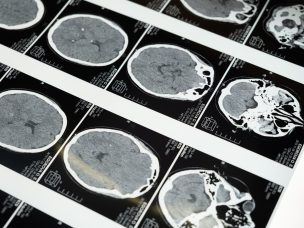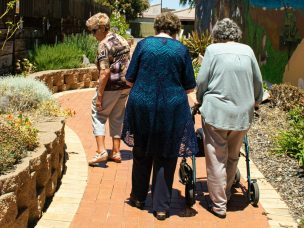Specialty
Brain Age Gap in NMOSD Patients Compared to Healthy Controls
Machine learning-based brain age calculations were found to be significantly predictive biomarkers in patients with NMOSD and RRMS. Neuroimaging-based “brain age” is a commonly used biomarker for quantifying the progress of both brain disease and aging [1]. Biological brain age is usually estimated by using various approaches for interpreting magnetic resonance imaging (MRI) data. There...
The Subjective Experience of Spasticity in Patients with Multiple Sclerosis
This study focuses on the unique subjective experience of spasticity in patients with MS in order to give clinicians and nurses additional insights into how to support patients dealing with this frustrating symptom. Spasticity is one of the central symptoms experienced by individuals with multiple sclerosis (MS) and is a cause of increased disability. Spasticity...
Types of Anxiety in People with Multiple Sclerosis
Patients with multiple sclerosis can experience various mental health difficulties, and this study focuses specifically on the prevalence of anxiety in this population. Among patients with multiple sclerosis (MS), anxiety represents one of the most common psychological symptoms and can impact both overall disease burden and quality of life. The psychopathological feature of anxiety can...
Comparing Rituximab Efficacy in Patients with NMOSD and MOGAD
Rituximab shows promising effects in patients with NMOSD, but is less effective in patients with MOGAD. The efficacy of rituximab in patients with myelin oligodendrocyte glycoprotein antibody-associated disorders (MOGADs) is not fully understood but has been shown to be relatively greater for aquaporin-4-IgG-positive neuromyelitis optica spectrum disorders (AQP4-IgG+NMOSDs). This study, published in the Journal of...
Non-Immune Comorbidities in Patients With NMOSD
Patients with NMOSD who have non-immune-related comorbidities face unique challenges in their treatment. This study examined their demographics and risk factors. Among patients with neuromyelitis optica spectrum disorders (NMOSD), those with comorbidities may have unique clinical features, prognoses, and treatment outcomes. Comorbidities may affect various systems of the body, and this study, published in the...
The Efficacy of Contemporary NMOSD Treatments Over Time
This study provides a longitudinal analysis of NMOSD outcomes using modern treatment methods and finds more promising results than past studies have shown. Even in patients who undergo immunosuppressive or immunomodulatory therapy, neuromyelitis optica spectrum disorder (NMOSD) tends to follow a progressive disease course with step-wise accumulation of disability over time. The influence of aquaporin-4...
Elevated dsDNA in Patients with NMOSD
The role of dsDNA in the cerebrospinal fluid of patients with NMOSD is not fully understood, but researchers have found that the levels are higher in this population. Neuromyelitis optica spectrum disorder (NMOSD) causes inflammation in the central nervous system and results in severe myelitis and optic neuritis. Double-stranded DNA (dsDNA) has been found to...
Aberrations Identified in Gut Microbiota of Multiple Sclerosis Patients
Cluster of inflammation markers positively associated with multiple sclerosis-related species Considerable alterations in the gut microbiota are seen in patients with multiple sclerosis, according to a study published online Jan. 5 in Genome Medicine. Florence Thirion, from Université Paris-Saclay, and colleagues conducted a case-control study involving 148 Danish cases with multiple sclerosis and 148 matched healthy...
Supporting Breast Cancer Survivors via Text Messages
Text message services offer a low-cost, noninvasive way to help breast cancer survivors post-treatment. They are effective for improving patient–healthcare provider communication. The effects of breast cancer treatment on women’s mental and physical health can linger for years after treatment has ended. Structured post-treatment support is limited and available services are inaccessible to many patients...
More Medical News














